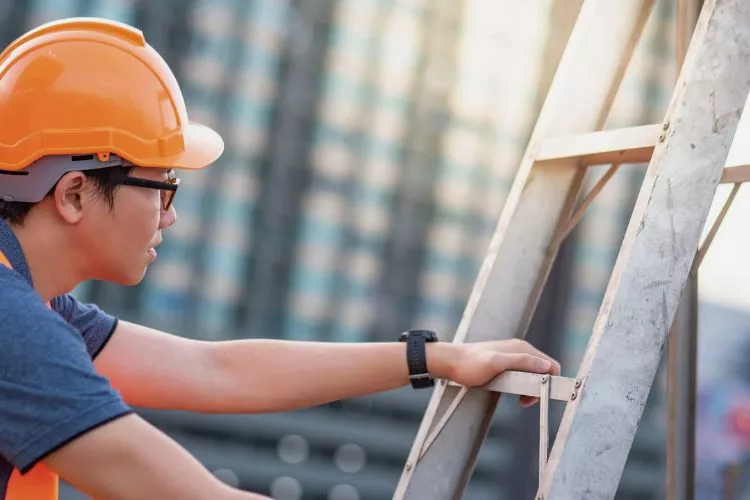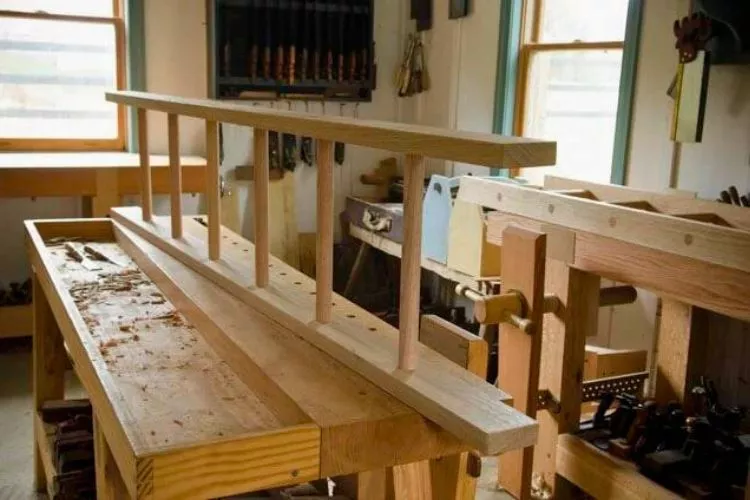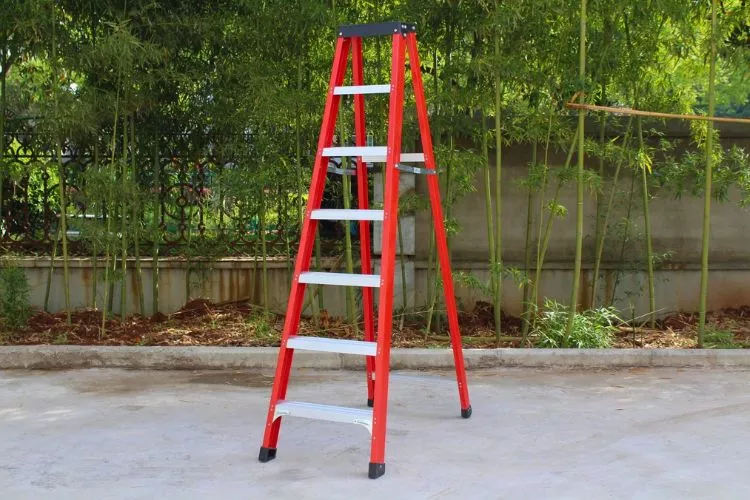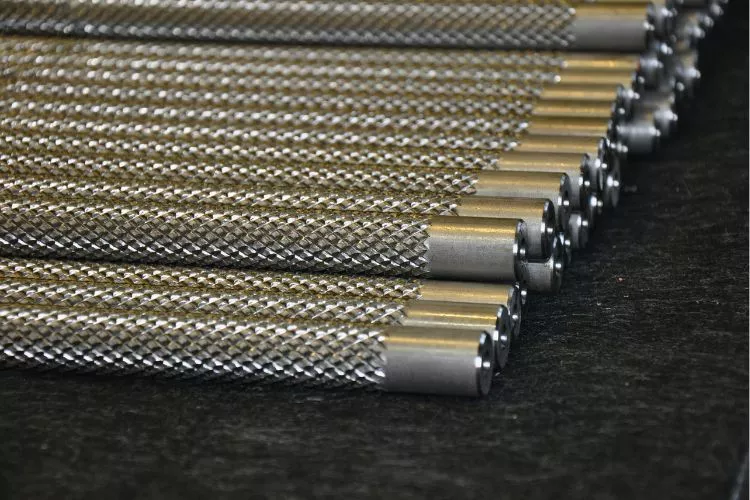Ladders are essential for many professions, from construction workers to firefighters to window cleaners. But have you ever stopped to think about what makes a ladder sturdy and reliable?
That’s right; it’s the rungs. In this article, I’ll explore what is a rung on a ladder, the importance of rungs on a ladder, the different types of rungs available, and how to use them safely and effectively. By the end, you’ll understand what a rung on a ladder is and why it matters so much.

What is a rung on a ladder?
A rung on a ladder is the horizontal bar or step a person places their foot on to climb up or down the ladder. These rungs are evenly spaced along the ladder’s side rails, providing support and stability for the person using the ladder.
Ladder rungs can be made from various materials, such as wood, metal, or fiberglass, depending on the type and purpose of the ladder. The rungs are usually cylindrical or flat, providing the climber a comfortable and secure footing. Properly maintained and spaced rungs are crucial for ladder safety, as they help prevent accidents and falls while using the ladder.
What’s another name for a ladder rung?
While “ladder rung” and “ladder step” are the most common terms used to describe the horizontal bars or supports on a ladder, other names or variations may include:
- Step
- Rung
- Crosspiece
- Tread
These terms all refer to the same component of the ladder: the part a person steps on while ascending or descending the ladder.
What are the different types of rungs on ladders?
Different types of ladder rungs can be classified based on the materials used for their construction. Wood, fibreglass, and metal are the most common materials for ladder rungs.
Wooden Rungs


Wooden rungs are typically found on traditional or older ladders. They are made from strong, durable hardwoods like oak or maple.
Wooden rungs provide a natural, non-slip surface and can be more comfortable standing on for extended periods than metal rungs. However, they may be susceptible to rot, moisture damage, and wear over time, compromising the ladder’s safety.
Fiberglass Rungs
Fiberglass rungs are popular in modern ladders due to their strength, durability, and lightweight construction. These rungs are non-conductive, making them an ideal choice for electrical work or other applications where contact with electricity is risky. Fiberglass rungs are also resistant to corrosion and weathering, making them suitable for outdoor use. However, they can be more expensive than wooden or metal rungs.


Metal Rungs
Metal rungs are commonly used in industrial and commercial ladders due to their strength and durability. They can be made from various metals, such as aluminum, steel, or stainless steel. Aluminum rungs are lightweight and corrosion-resistant, making them suitable for outdoor use.


Steel and stainless steel rungs are heavier but provide increased strength and durability. Metal rungs can be treated with different finishes, such as milled, painted, hot dipped, or galvanized, to improve grip and corrosion resistance.
Rung Shapes and Surface Treatments
Ladder rungs can come in various shapes, such as cylindrical, flat, or D-shaped. Cylindrical rungs provide a comfortable grip for hands and feet, while flat and D-shaped rungs offer a wider surface area for improved stability. To enhance safety and reduce the risk of slipping, some rungs may be coated with non-slip materials, such as rubber or textured finishes. In addition, some ladders may feature rungs with built-in drainage channels to prevent water accumulation and improve traction.
What is the 3 rung rule for a ladder?
The 3 rung rule for a ladder refers to maintaining three points of contact when climbing a ladder, which usually means having two feet and one hand or two hands and one foot on the ladder at all times. This rule is essential for maintaining balance and preventing falls using a ladder.
What is OSHA approved ladder rungs?
OSHA-approved ladder rungs meet the specifications outlined in the Occupational Safety and Health Administration (OSHA) regulations. According to OSHA’s general requirements for ladder rungs, they must be parallel, level, and uniformly spaced when the ladder is in position for use. For most ladders, rungs, steps, and cleats should be spaced between 10 inches (25 cm) and 14 inches (36 cm) apart, measured between the centerlines of the rungs.
Which rungs of a ladder should not be used?
As for which rungs of a ladder should not be used, OSHA states that the top or top step of a stepladder should not be used as a step and that the top three rungs of a straight, single, or extension ladder should not be used for climbing. This ensures the user’s stability and prevents falls from an unstable position on the ladder.
Other Basic Ladder Guide: How to Use a Ladder On Stairs | How to Tie Off a Ladder For Safety
Conclusion:
I hope now you have a clear idea about what is a rung on a ladder. To put it simply, a ladder rung is an essential component of any ladder, providing horizontal support for users to step on while climbing up or down. Rungs can be made from various materials, such as wood, fiberglass, or metal, each offering unique advantages and suitability for specific applications. The design, spacing, and surface treatment of ladder rungs are crucial in ensuring user safety and preventing accidents.


